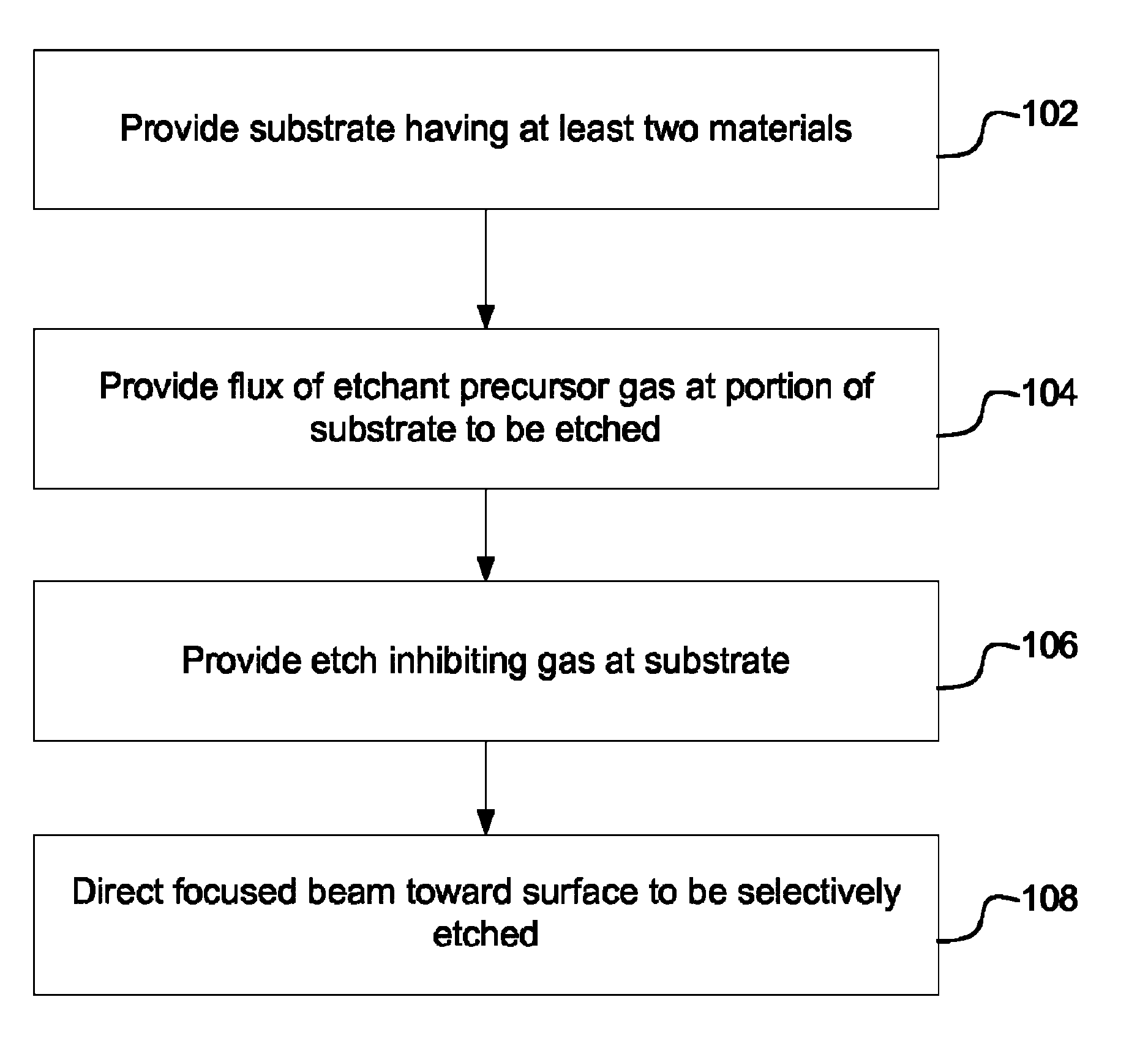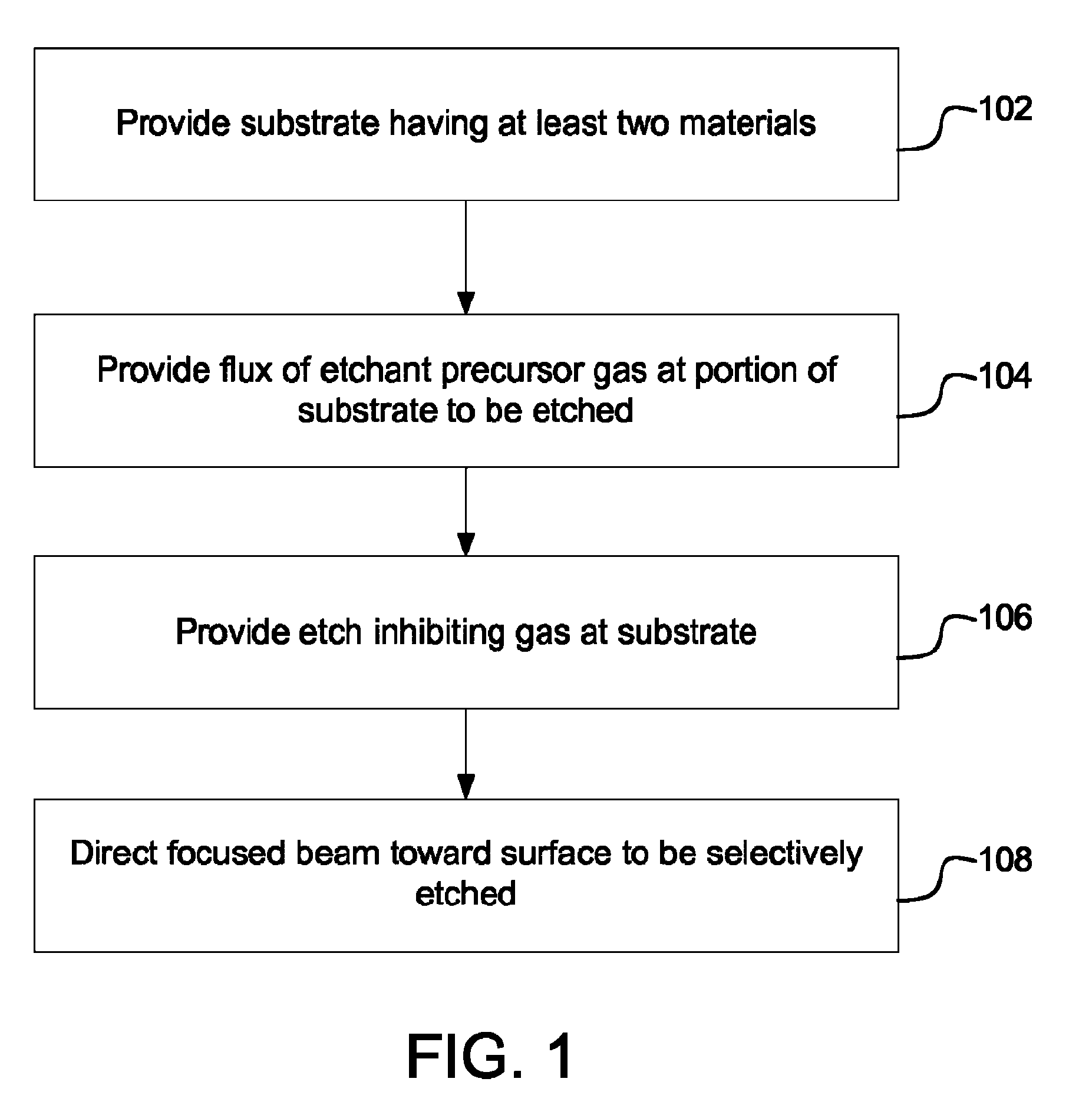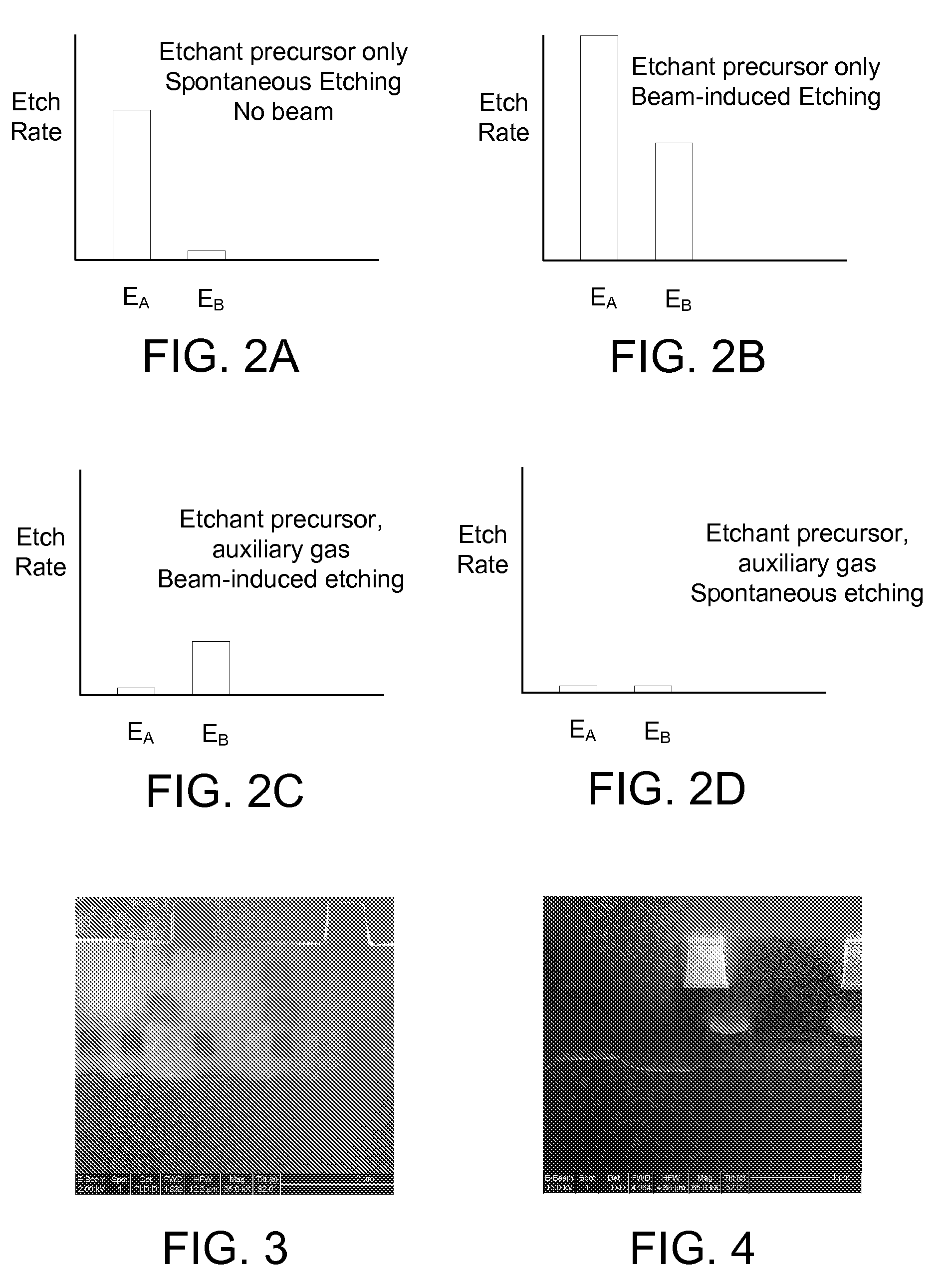High selectivity, low damage electron-beam delineation etch
a technology of electron beam and delineation etching, which is applied in the direction of basic electric elements, semiconductor/solid-state device manufacturing, electric devices, etc., can solve the problem that the reaction of rivals barely favors deposition on one or more of the other materials
- Summary
- Abstract
- Description
- Claims
- Application Information
AI Technical Summary
Benefits of technology
Problems solved by technology
Method used
Image
Examples
Embodiment Construction
[0019]Embodiments of the invention provides a method and apparatus for selectively processing materials on a substrate using a focused beam, such as an electron beam, ion beam, neutral particle beam, or laser beam. Using a finely focused beam allows a user to precisely control the region to be processed. For example, modern electron beams can be focused to a spot size of a few nanometers and can be scanned over a region on the order of nanometers up to millimeters. During electron beam processing, a substrate typically has multiple materials exposed to the precursor gases or to the beam. In one preferred embodiment, competing reactions, both spontaneous and beam-induced, favor etching of a first material over etching of one or more other exposed materials. Thus, those embodiments preferentially etch the first material, while preserving or minimizing damage to the other exposed materials.
[0020]In some embodiments, two precursor gases are introduced into the region of the work piece. ...
PUM
 Login to View More
Login to View More Abstract
Description
Claims
Application Information
 Login to View More
Login to View More - R&D
- Intellectual Property
- Life Sciences
- Materials
- Tech Scout
- Unparalleled Data Quality
- Higher Quality Content
- 60% Fewer Hallucinations
Browse by: Latest US Patents, China's latest patents, Technical Efficacy Thesaurus, Application Domain, Technology Topic, Popular Technical Reports.
© 2025 PatSnap. All rights reserved.Legal|Privacy policy|Modern Slavery Act Transparency Statement|Sitemap|About US| Contact US: help@patsnap.com



